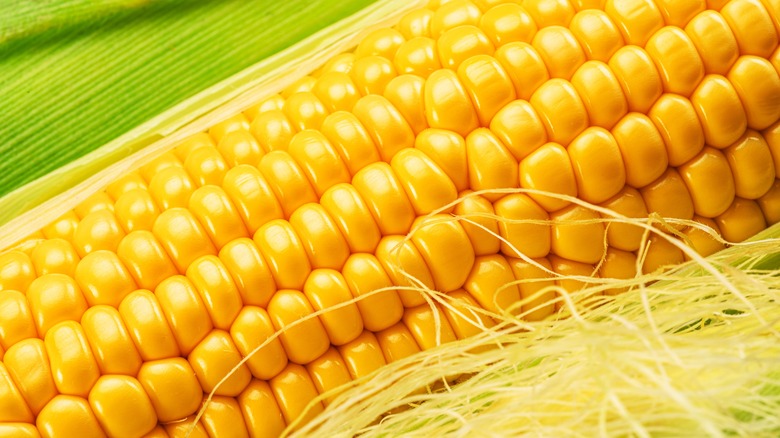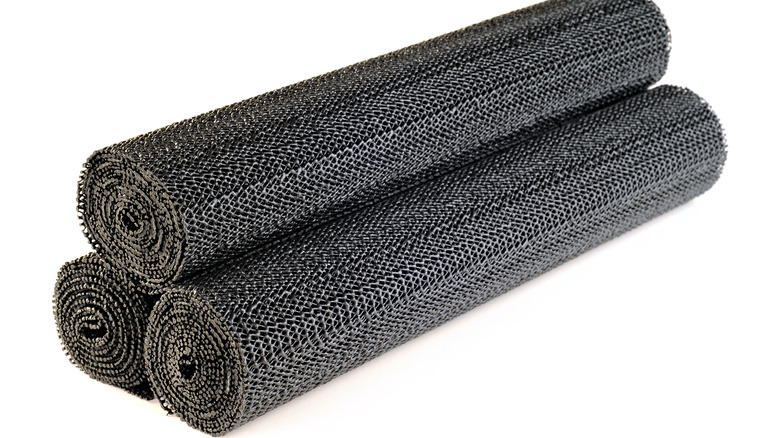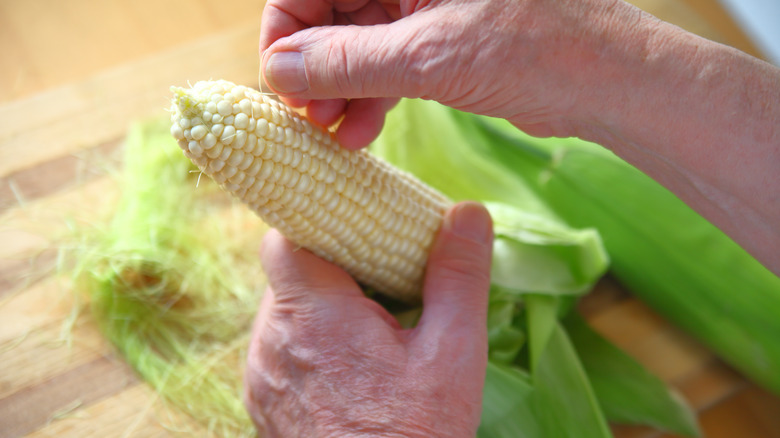The Unexpected Hack For Removing That Annoying Corn Silk
Summertime grilled corn on the cob is one of the highlights of the season, but prepping this favorite food comes with its hazards, specifically, all that darn corn silk. Those hairy, sticky strings not only look unappetizing, but they also get in your teeth and make your corn-noshing experience less than stellar. But that's not the only place they wind up. You are bound to find strings of corn silk on your countertops, floors, and other kitchen surfaces. They make a mess.
While a rubber dish glove can de-silk corn, there's another kitchen hack you can try: shelf liner. This breathable, open-weave lining can save your shelves from water damage, and it can attract those stringy threads like a roll of tape gets rid of lint. Once you've shucked your corn, simply run a square of your shelf liner — or a gripper pad if you don't have any liner to spare — around your ears of corn, run it all around the corn, and watch the silk threads disappear.
This trick won't damage your corn
Why does it work? Rubber shelf liner has a flexible, grip-like quality to it, which will help you maintain a good grasp as you move the corn back and forth across its bumpy, textured surface, stripping away these strings from your ear. At the same time, shelf liners and jar grippers are soft in nature, so you know they will not damage the kernels of corn.
Of course, before you try this hack, it's important to note that you may have to use a little pressure when using your shelf liner, and you may also have to go over the corn a few times before most, if not all of the silk is gone. If you find that there are still a few pesky strands left, run it under cold water, make one more pass with your gripper or shelf liner, and those errant pieces of corn silk should come right off.
Don't put corn silk down the drain
Why does corn on the cob have corn silk in the first place, and why is there so much of it? While corn silk is a bit of an annoyance, it is also a necessity. According to the Cleveland Clinic, an ear of corn can have anywhere between 300 and 600 of these threads, and they are part of its reproductive system. Without these fibrous strings — which are actually tubes that trap pollen — the kernels of corn wouldn't grow, nor would they have the ability to become sweet and juicy.
Before you toss the silks in the garbage, examine them to see if they are free of any brown coloring. If they are, you can dry the corn silk and use it to brew a tea, or it can be used as an herb to add a sweet, corny taste to your salad or couscous. But whatever you do, don't put it down the drain. The silks can turn into a bundle of threads that clog your pipes if you aren't careful.


